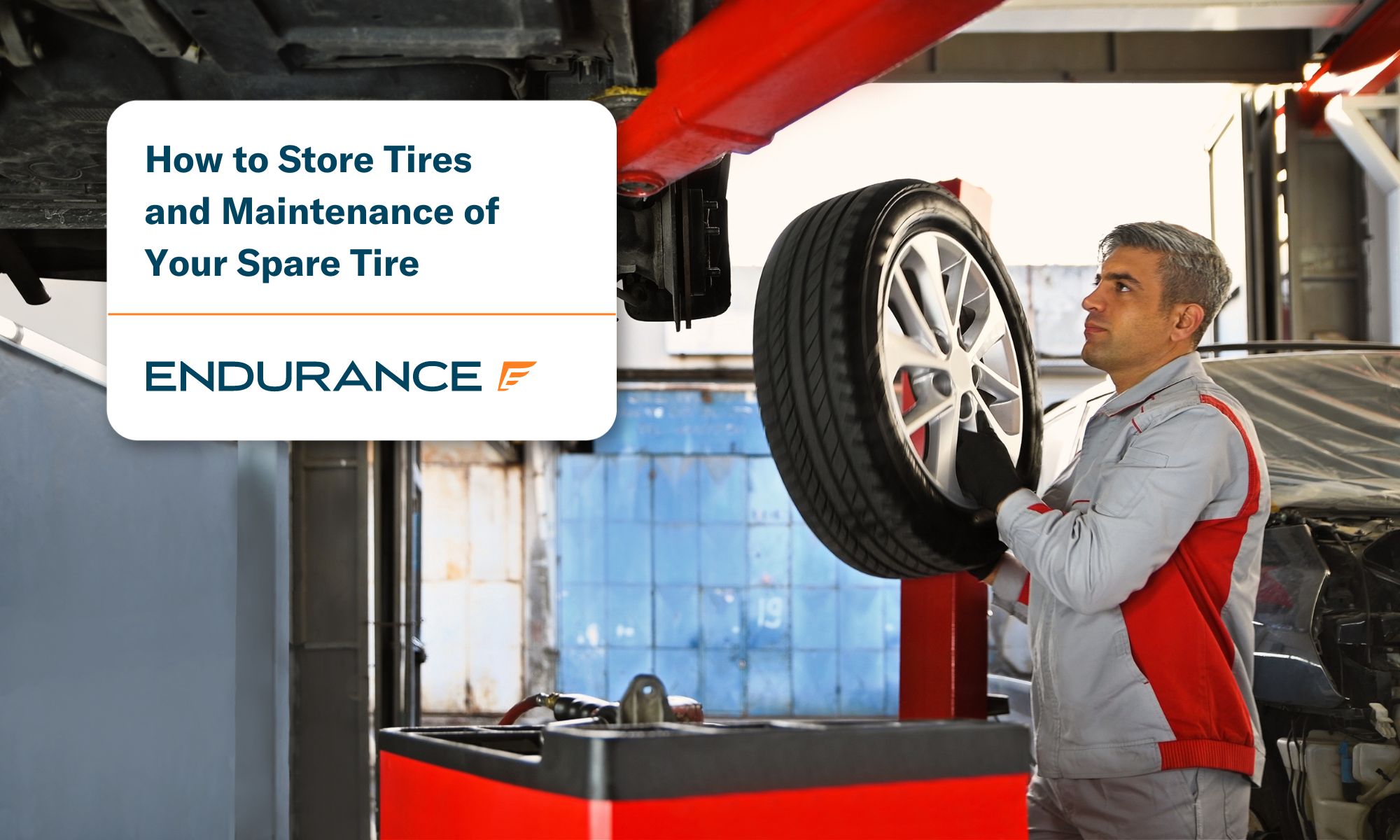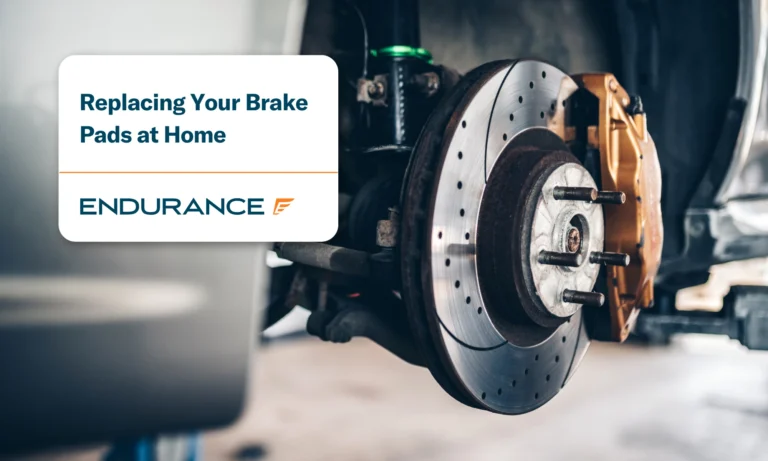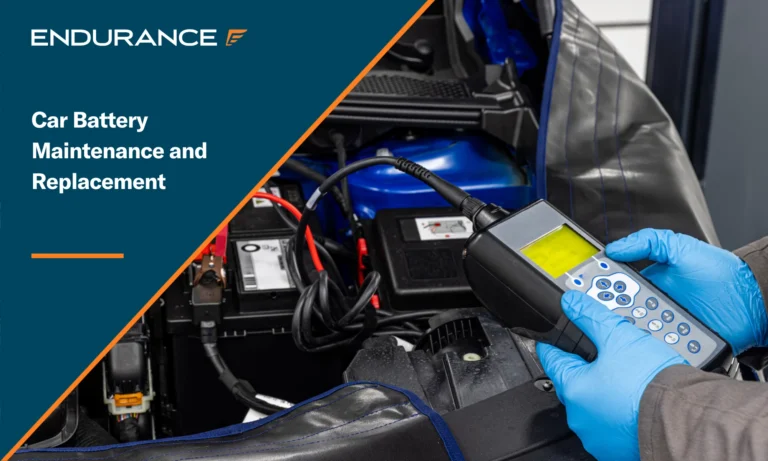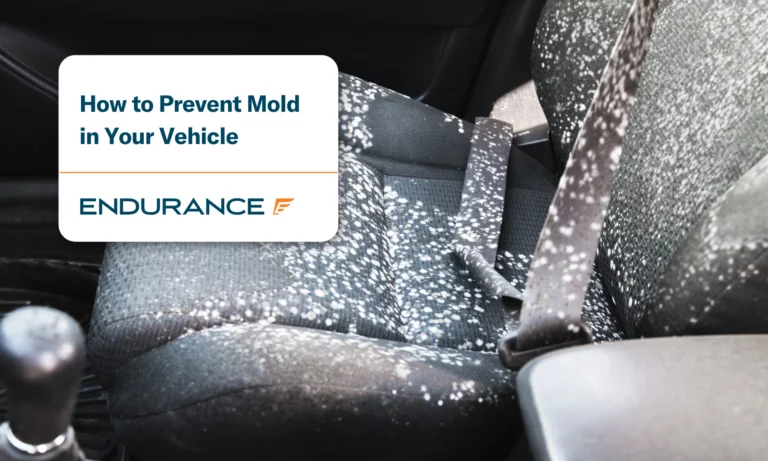How to Store Tires and Maintenance of Your Spare Tire

Tires are essential to your vehicle’s safety, functionality, and performance. Therefore, proper tire storage and maintenance are crucial to ensure longevity and efficiency. This blog aims to provide some handy tips and insights on how to store tires, as well as the necessary precautions and practices for maintaining your spare tire. From appropriate storage conditions, such as temperature and humidity levels, to tire rotation and pressure checks, we will cover all the essential aspects of tire upkeep.
Tire Storage Best Practices
Tire storage is an important part of maintaining the lifespan and performance of tires. Proper tire storage practices can help prevent tire deterioration and extend their life beyond their usual lifespan. To prepare tires for storage, cleaning is key. Dirt and debris can cause tire damage over time, so cleaning with warm soapy water and a soft brush is recommended. It’s also important to thoroughly dry the tires before storing them.
When choosing a tire storage location, it’s best to pick a cool and dry environment that is not exposed to extreme temperature changes or direct sunlight. The storage area should be clean, well-ventilated, and away from any electrical devices. Additionally, tires should be organized and stacked to evenly distribute the weight to prevent deformation and contact with sharp objects.
Protecting tires from environmental factors is crucial in ensuring their longevity. Tires should be stored away from any chemicals or ozone-producing objects that can cause damage to the rubber, such as fuel, solvents, or even electric motors. Storage bags or covers can also provide additional protection from dust, dirt, and moisture.
Proper tire storage practices are crucial to maintaining tire durability and maximizing performance. Ensuring tires are always clean, dry, and protected from environmental factors is the key to preventing damage and deterioration of your tires. Following these tire storage best practices can help extend the life of your tires beyond their expected lifespan, making them worth the investment.
8 Tire Storage Do’s and Don’ts
Do’s:
- Clean your tires thoroughly before storage. – Dirt, grime, and other debris that accumulate on your tires can eventually lead to cracks and degradation. Clean tire surfaces with a gentle cleaning solution and a soft-bristled brush, and remove any stubborn grime.
- Store tires in a dry and cool place. – Heat and moisture can cause tire damage and promote bacteria growth on the surface. Therefore, storing your tires in a cool and dry environment, away from direct sunlight, is essential to ensure that they remain in optimal condition.
- Store tires on racks or tire bags. – The best way to avoid structural damage to your tires is to store them on a rack or in a tire bag. This method will help prevent pressure points and other damage that can be caused by improper storage.
- Check tire pressure regularly. – Due to changes in temperature, tire pressure can fluctuate, which can sometimes lead to tire distortion. Therefore, periodically check your tire’s PSI levels and adjust them to the recommended levels to help prolong their lifespan.
Don’ts:
- Don’t store tires outside. – Exposure to sunlight, rain, or snow can cause considerable damage to your tires in a short time. Store your tires in a secluded area or in a garage where they won’t be exposed to the elements.
- Don’t stack tires on top of each other. – Placing multiple tires on top of each other can cause the bottom tires to become compressed and distorted, which can lead to structural damage.
- Don’t store tires near heat sources. – The excessive heat generated by fireplaces, heaters, or engines can cause your tires to degrade and even catch fire.
- Don’t use chemicals for tire storage. – Petroleum-based chemicals like oil or gasoline can degrade the rubber materials in your tire, so avoid using them when storing your tires.
Spare Tire Maintenance
Spare tire maintenance is a crucial aspect of vehicle safety that is often overlooked by motorists. A spare tire, also known as a “donut” or “emergency tire,” is an extra tire kept in a vehicle’s trunk, undercarriage, or mounted on the rear. It is meant to be used in case of a tire blowout or flat, but many car owners don’t give much thought to its upkeep.
To extend the life of your spare tire, it is important to check it regularly for wear and tear. Spare tires are often made of cheaper materials and may have a shorter lifespan than your regular tires. You should inspect the tire for cracks, bulges, or punctures and check its tread depth.
Experts recommend replacing your spare tire every six to eight years to prevent any complications during a roadside emergency. To ensure your safety in such situations, it is essential that your spare tire is properly inflated. A tire gauge should be used to check the air pressure on a regular basis.
In addition, the placement of the spare tire is also a critical factor in vehicle safety. It is recommended that the spare tire should be located in a secure and easily accessible spot in your vehicle. This will prevent damage and make it easier for you to change your tire in the event of a flat.
The placement of the spare tire is also a critical factor in vehicle safety. It is recommended that the spare tire should be located in a secure and easily accessible spot in your vehicle. This will not only prevent damage but also make it easier for you to change your tire in the event of a flat.
Tire Repair and Warranty Considerations
Tire repair is a significant aspect of vehicle maintenance, particularly for those seeking to extend the lifespan of their tires and reduce the overall cost of vehicle ownership. However, when considering potential tire repair options, it is vital to understand the limitations on tire repair coverage under extended warranties. Many extended warranties offer limited coverage for tire repair, and it is important to carefully read the terms and conditions before making any decisions.
Proper procedures for tire repair are also critical to ensure maximum safety and longevity of the tire. Although various tire repair methods exist, the plug-and-patch method is the most widely accepted technique. This involves inserting a plug into the punctured area while also sealing the inner lining with a patch. It is important to follow proper repair procedures to prevent further damage to the tire, avoid compromising tire safety, and ensure compliance with manufacturer warranty requirements.
Manufacturers provide specific guidelines for tire repairs, and it is essential to adhere to them to ensure proper function and safety. Failure to follow manufacturer guidelines can void the tire warranty and put the driver and other road users at risk. Finally, any improper tire repairs or modifications can have significant implications on the tire warranty, and it is important to seek professional advice before undertaking any repairs or modifications to avoid voiding the tire warranty and future expenses.
Extended Warranty Coverage for Tires
Knowing the extent of tire coverage in extended warranties is crucial in making informed purchase decisions. Generally, tire coverage in extended warranties varies based on the provider. Some warranties cover tire replacement if they are damaged, while others offer protection against wear and tear. With an extended warranty from Endurance, you can choose Elite Benefits, including great benefits such as 24/7 roadside assistance and tire replacement/repair. These are great benefits to have to protect you against tire blowouts and flats while on the road.
Maintenance Tips for Extended Tire Lifespan
Maintaining your vehicle’s tires is essential to ensure optimal performance and safety on the road. Regular tire inspections are crucial to identify signs of wear and damage. Experts recommend inspecting your tires once a month and before long-distance trips. Proper tire rotation and alignment practices help distribute the tread wear evenly, extending your tire’s lifespan. Maintaining correct tire pressure and load capacity also promote tire longevity and fuel efficiency. It’s crucial to check your tire’s pressure using a tire gauge regularly. Over-inflated and under-inflated tires can cause uneven tread wear. Lastly, considering tire replacements and upgrades at the appropriate time can save you money in the long run, prevent accidents, and provide better performance, especially in extreme weather conditions.
Protect Your Tires With Endurance
Properly storing and maintaining your spare tires is essential to make sure you’re prepared in the event of a flat tire. By checking the air pressure regularly, storing them in a cool and dry place, and rotating them periodically, you can extend the life of your tires and save yourself from unexpected breakdowns. Neglecting your spare tire can lead to safety hazards on the road and expensive repairs that can easily be avoided with proper maintenance and a good extended warranty.
Endurance is an insurance company that offers a variety of coverage levels to meet your unique needs. We are committed to providing exceptional benefits with our plans, including a free one-year subscription to Elite Benefits with a small activation fee. The Elite Benefits offer a range of perks, such as coverage for up to two tires per year due to road hazards, 24/7 roadside assistance, and total loss protection of up to $1,000. With Endurance, you can enjoy peace of mind like never before.
Endurance’s customer service team is award-winning, and you can speak directly with our team by calling (800) 253-8203 to request a FREE quote. You can also shop conveniently online. Don’t compromise on your happiness and security – opt for Endurance today and discover how we can safeguard your vehicle while saving you time and money. Whether you’re looking for a pre-existing package or prefer to tailor your plan according to your requirements and budget, Endurance has you covered.













After more than 16 years as a technician and service advisor, Adam Karner transitioned to the auto protection industry in 2009. As a Product Manager for Endurance Dealer Services, he brings valuable hands-on experience. Read more about Adam.